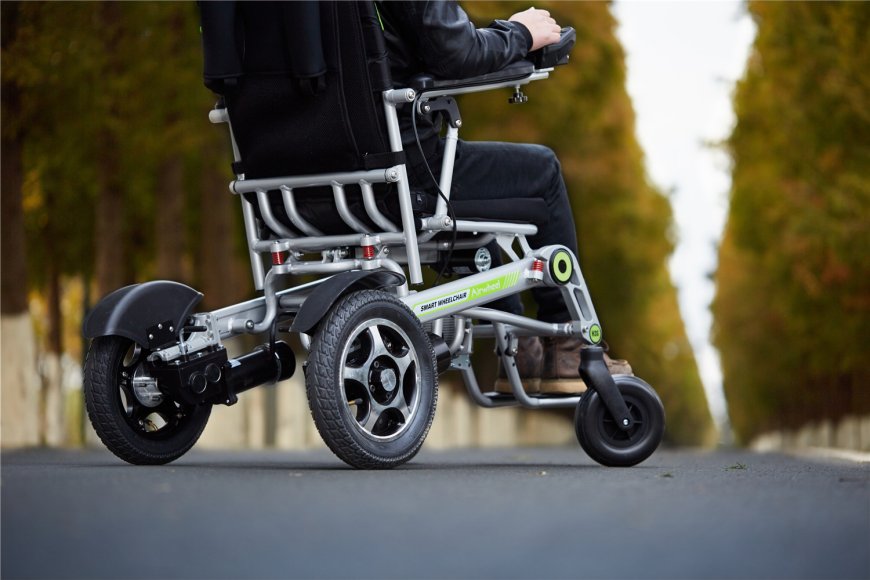Electric Wheelchairs: Improving Mobility and Independence for All In Global Market Industry
The first electric wheelchair was invented in 1932 by Herbert Everest and Harry Jennings. Their early battery-powered wheelchair had a range of just 1.5 miles. Over the following decades, incremental improvements were made to battery life, speed, maneuverability and durability. In 1969, Invacare developed the first modern foldable electric wheelchair.

History of Electric Wheelchairs
The first electric wheelchair was invented in 1932 by Herbert Everest and Harry Jennings. Their early battery-powered wheelchair had a range of just 1.5 miles. Over the following decades, incremental improvements were made to battery life, speed, maneuverability and durability. In 1969, Invacare developed the first modern foldable electric wheelchair. This allowed increased portability and made motorized scooter practical for home use. By the 1980s, motorized scooter had become quite advanced with features like programmable controllers, powered elevating leg rests and tilt systems. Today's motorized scooter can travel up to 18 MPH with a range of over 30 miles on a single charge.
Components and Functions
A basic Electric Wheelchair consists of a frame, seat, batteries, motor and controller. The rechargeable batteries provide power to a small electric motor, usually mounted directly on the rear wheels. A joystick or alternative controls allow the user to drive and maneuver the wheelchair independently. Most models have additional powered accessories like elevating leg rests, tilt systems, standing frames and ramps. Advanced motorized scooter may integrate environmental controls, joystick emulation and even basic artificial intelligence. These additional functions promote greater accessibility and autonomy for wheelchair users.
Driving and Electric Wheelchairs
Driving an electric wheelchair is very similar to driving a basic mobility scooter. Users control speed and direction through a proportional joystick or alternative controls. Pushing the joystick fully forward will drive the wheelchair at its maximum speed, while easing off engages braking progressively. Turning is achieved by pushing the joystick left or right. Most modern motorized scooter can turn within their own footprint for great maneuverability in tight spaces. Programmable controllers allow customizing speed settings and sensitivity of controls. Additional features like dynamic stability control and anti-tip wheels enhance safety during driving.
Benefits of Motorized scooter
Compared to a manual wheelchair, an electric wheelchair provides increased independence, mobility and quality of life. For individuals with limited upper body strength or dexterity, an electric wheelchair allows independent travel that would not be possible otherwise. They promote accessibility both indoors and out. The motorized drive system eliminates the physical effort of self-propelling and allows traveling longer distances comfortably. Terrain that may be difficult or impossible to navigate manually can be traversed independently with an electric wheelchair. This freedom of mobility has profound psychological as well as physical benefits. Motorized scooter also enable wheelchair users to participate more fully in educational, employment, social and community activities.
Options and Customization
Motorized scooter are available in a wide variety of frame styles, sizes and power configurations to suit different mobility needs and environments. Manufacturers like Permobil, Invacare, Sunrise Medical and Quantum offer multiple product lines. Choose between front-wheel drive, center-wheel drive and rear-wheel drive models. Frame styles range from compact folding chairs for apartments to full-size rigid frames for outdoor use. Seat widths, depths and materials allow proper postural support. Tilt, recline and elevating leg rests provide positioning options. Programmable controllers, joystick modifiers and specialized mounts aid usability. Accessories further customization for individual activities. Custom orders allow totally customized solutions. Proper evaluation and fitting by a qualified therapist helps ensure the right electric wheelchair setup.
Maintenance and Lifespan
With proper care and preventative maintenance, an electric wheelchair can provide years of reliable mobility. Daily checks include inspecting wheels, armrests, joystick and charger port for issues. Weekly tasks involve cleaning upholstery and frames. Monthly maintenance includes inspecting tires, brakes, bearings and motors for signs of wear. Annual servicing by a dealer replaces worn components and fully inspects all systems. Storage conditions like temperature, humidity and protection from elements affect longevity. Following manufacturers' recommendations maximizes lifespan from 5-10 years or more depending on usage. With routine care, most components are designed to outlast the average electric wheelchair user. Reconditioned and refurbished chairs offer more affordable options as well.
Safety Considerations
Safety must be top priority with any electric mobility device. Check local laws and accessibility code guides for approved usage areas like streets, sidewalks and public transportation. Always make fully visible to other traffic at night with reflective tape and safety flags. Never exceed the chair's maximum weight rating or overload built-in carrying capacity. Batteries contain hazardous materials so handle removal and disposal carefully. Favor well-lit, level surfaces and avoid steep slopes which compromise stability. Invest in additional anti-tip wheels, positioning/mounting accessories and safety belt use for traversing uncertain terrain. Know brake mechanics thoroughly before operating on any incline. Store chair in a secure location out of weather elements when not in use. Obtain proper training before operating independently for first time. Always use common sense and safe operating practices.
modern motorized scooter have significantly improved mobility and independence for hundreds of thousands of people worldwide. By providing motorized mobility solutions customized for individual needs, motorized scooter promote barrier-free access and full community participation. With responsible operation and proper maintenance over time, today's advanced motorized scooter deliver many active, productive years of mobility and freedom. They are enabling technology that improves quality of life for wheelchair users of all ages. Continuing innovation makes motorized scooter even more capable and user-friendly to serve diverse mobility challenges.
Get More Insights On Electric Wheelchairs
Explore More Related Articles Brachytherapy Market
For Deeper Insights, Find the Report in the Language that You want.
About Author:
Money Singh is a seasoned content writer with over four years of experience in the market research sector. Her expertise spans various industries, including food and beverages, biotechnology, chemical and materials, defense and aerospace, consumer goods, etc. (https://www.linkedin.com/in/money-singh-590844163)












